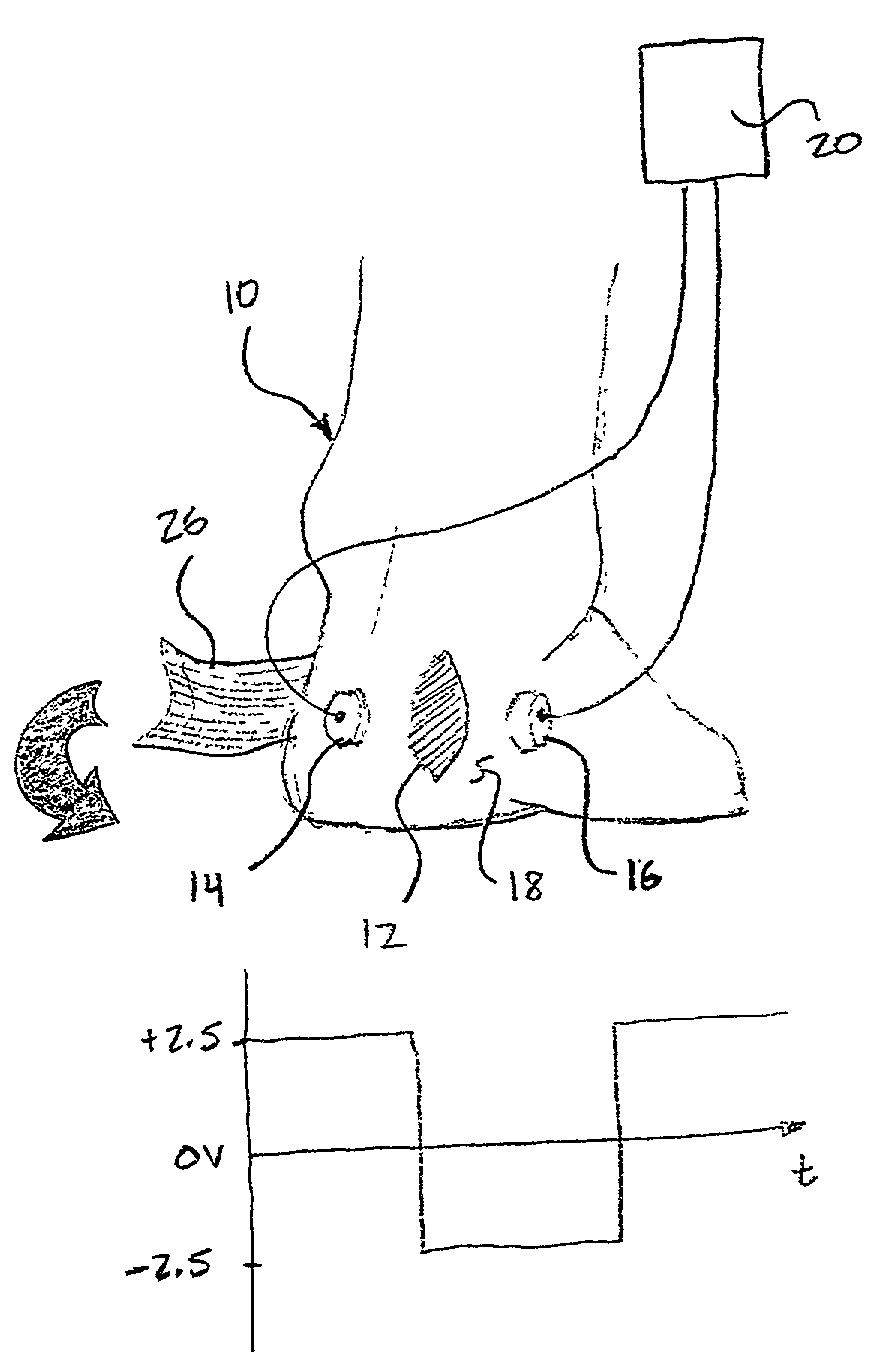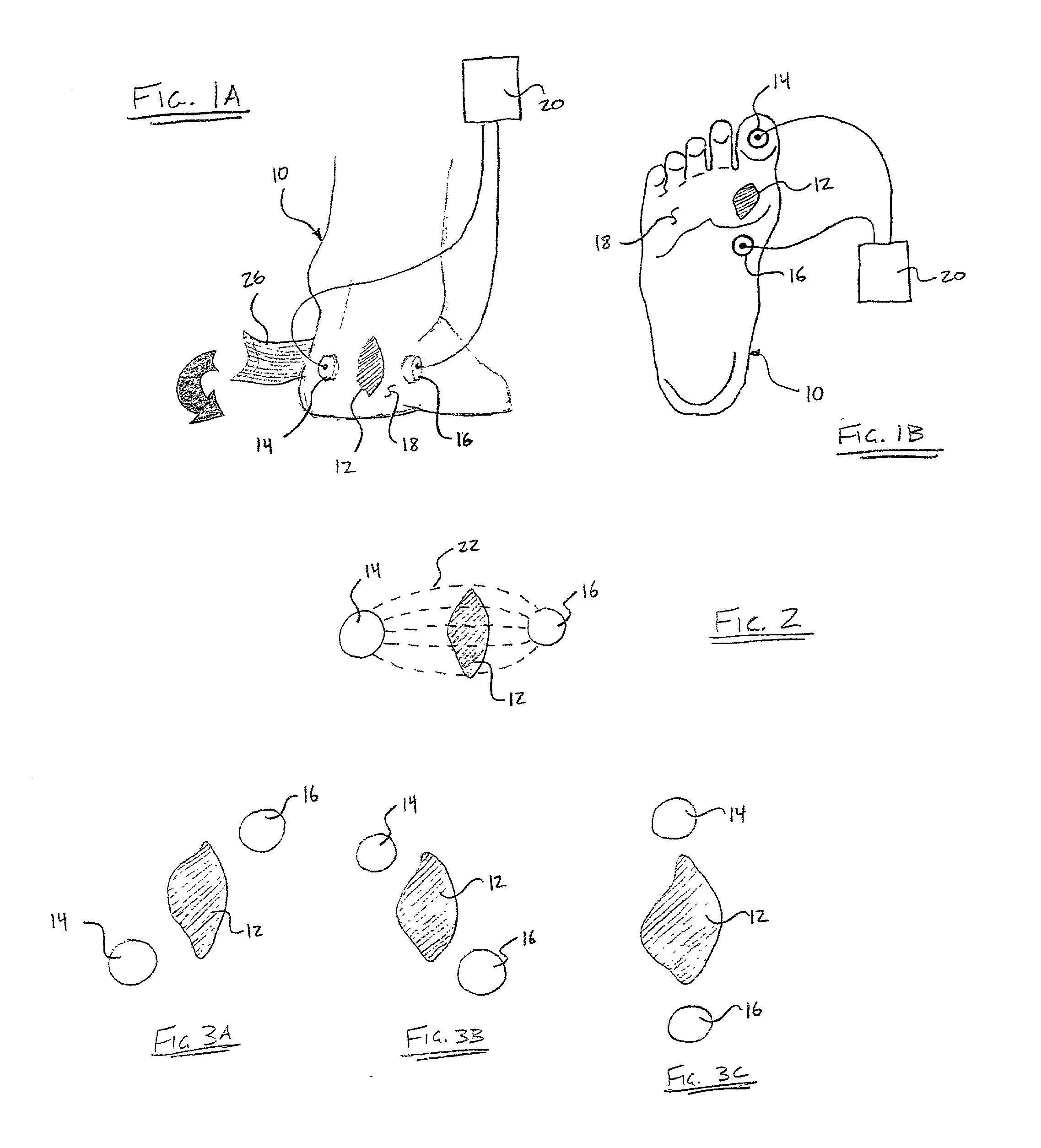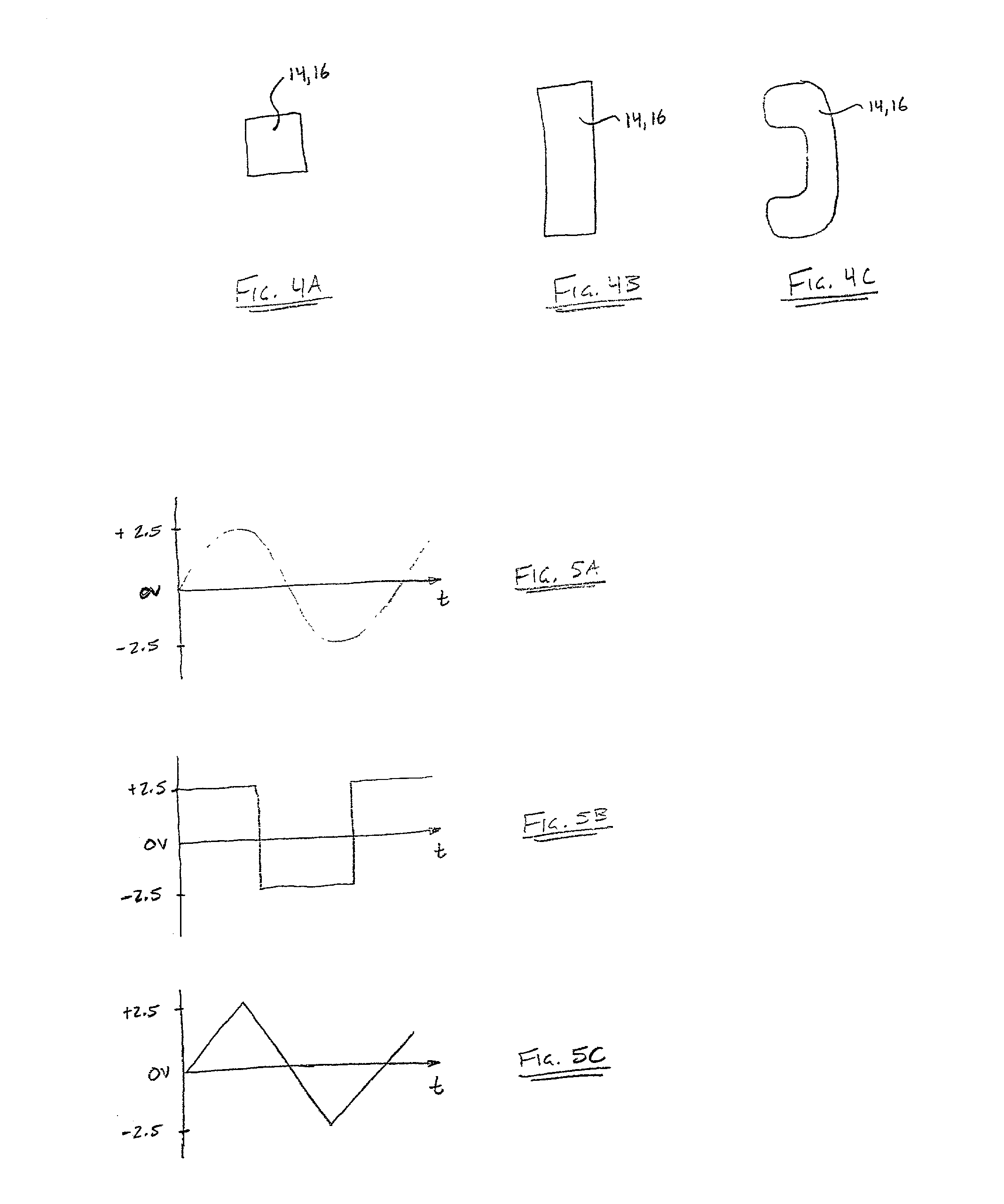Non-invasive capacitively coupled electrical stimulation device for treatment of soft tissue wounds
a capacitively coupled electrical stimulation and soft tissue technology, applied in the field of wound treatment, can solve the problems of high care costs, chronic wound patients facing a lack of effective treatment options, and chronic wounds that tend to heal very slowly, not heal at all, and even worsen
- Summary
- Abstract
- Description
- Claims
- Application Information
AI Technical Summary
Problems solved by technology
Method used
Image
Examples
Embodiment Construction
[0027]The following description of the preferred embodiments is merely exemplary in nature and is in no way intended to limit the invention, its application, or uses.
[0028]With particular reference to FIGS. 1A, 1B and 2, a lower body extremity 10, in this example a foot, includes a soft tissue wound 12, such as, but not limited to a venous ulcer, a pressure ulcer or a diabetic ulcer. First and second electrodes 14,16 are operably attached to a skin surface 18 on opposing sides of the soft tissue wound 12 for creating a capacitive coupling therebetween. While the present discussion is directed toward the first and second electrodes 14,16, it is anticipated that more electrodes may be implemented. The first and second electrodes 14,16 are non-invasively attached to the skin surface 18, whereby neither electrode 14,16 is in direct contact with the soft tissue wound 12. Further, especially in diabetic cases, the first and second electrodes 14,16 are preferably not disposed on pressure p...
PUM
 Login to View More
Login to View More Abstract
Description
Claims
Application Information
 Login to View More
Login to View More - R&D
- Intellectual Property
- Life Sciences
- Materials
- Tech Scout
- Unparalleled Data Quality
- Higher Quality Content
- 60% Fewer Hallucinations
Browse by: Latest US Patents, China's latest patents, Technical Efficacy Thesaurus, Application Domain, Technology Topic, Popular Technical Reports.
© 2025 PatSnap. All rights reserved.Legal|Privacy policy|Modern Slavery Act Transparency Statement|Sitemap|About US| Contact US: help@patsnap.com



